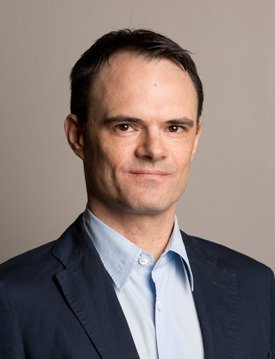Political Scientist Dominic Tierney on Why ISIS Is Winning

The Atlantic: ISIS Against Humanity
Nearly two millennia ago, the Romans built the Arch of Triumph in Palmyra, Syria. According to Picturesque Palestine, Sinai, and Egypt, published in 1881, “The wonder in these ancient ruins is not that so much has fallen, but that anything remains.” [Earlier this month], ISIS blew the Arch of Triumph, which the group considers idolatrous, to pieces. Such acts of aggression and barbarism have mobilized a vast enemy coalition, which includes almost every regional power and virtually every great power (and notably the United States, often compared to the Roman Empire in its hegemonic strength). Yet, incredibly, this alliance seems incapable of rolling back the Islamic State. How can a group of insurgents declare war on humanity—and win?
One of the basic principles of military strategy is that the attacker needs preponderant force to win. “It is the rule in war,” wrote Sun Tzu in The Art of War, “if our forces are ten to the enemy’s one, to surround him; if five to one, to attack him; if twice as numerous, to divide our army into two. If equally matched, we can offer battle; if slightly inferior in numbers, we can avoid the enemy; if quite unequal in every way, we can flee from him.”
ISIS has thrown this rulebook out the window by declaring war on one adversary after another—and then striking them with inferior numbers of troops.
In 2011, ISIS (then under the name of the Islamic State of Iraq) intervened in the Syrian Civil War and attacked the regime in Damascus, along with its allies (Iran, Russia, and Hezbollah) as well as moderate and Islamist Syrian opposition forces. In 2014, with the outcome of the Syrian conflict still in the balance, ISIS launched a major offensive into Iraq, thereby massively expanding the opposing coalition to include Iraq, Iranian-trained militias, the United States, Britain, and France. Unperturbed, ISIS then struck Kurdistan, and the ranks of its enemies swelled further.
By conventional logic, the militants’ strategy is reckless and even suicidal—the design of an apocalyptic cult with a death wish.
On one side of the battlefield there’s ISIS, with its tens of thousands of fighters.
On the other side of the battlefield is the anti-ISIS coalition, which includes four out of five permanent members of the UN Security Council (the United States, Russia, Britain, and France). Even the sole holdout, China, has signaled it may aid the Iraqi regime through intelligence-sharing and arms sales. The coalition also includes most regional players: Turkey, Syria, Iran, Iraq, Jordan, and the Gulf states. Did I mention that the most powerful non-state actors in the region, including Hezbollah and the Kurds, are also arrayed against ISIS?
Read the full article at The Atlantic.
Tierney, a senior fellow at the Foreign Policy Research Institute, is a contributing editor at The Atlantic and the author of three additional books, including How We Fight: Crusades, Quagmires, and the American Way of War. Tierney completed his Ph.D. in international politics at Oxford University in 2003 and was a post-doctoral fellow at the Mershon Center at Ohio State University and the Olin Institute at Harvard University before joining Swarthmore's faculty in 2005. In 2008-2009, he was a research fellow at the John F. Kennedy School of Government at Harvard. Listen to his talk "How We Fight: Crusades, Quagmires, and the American Way of War."


